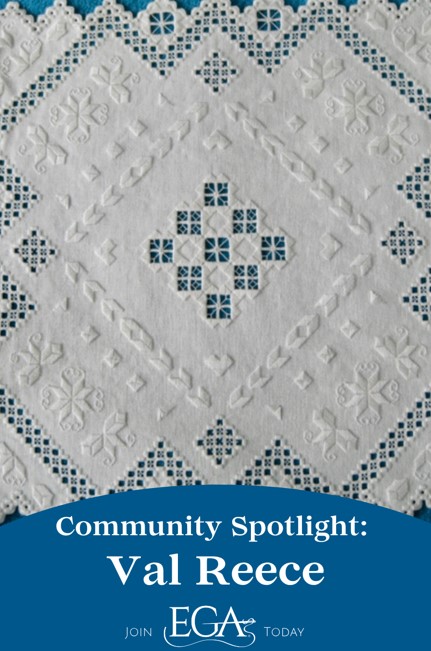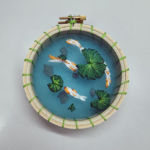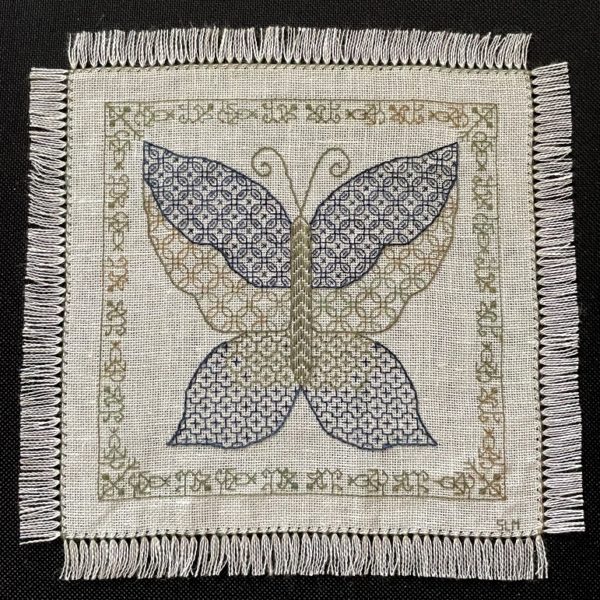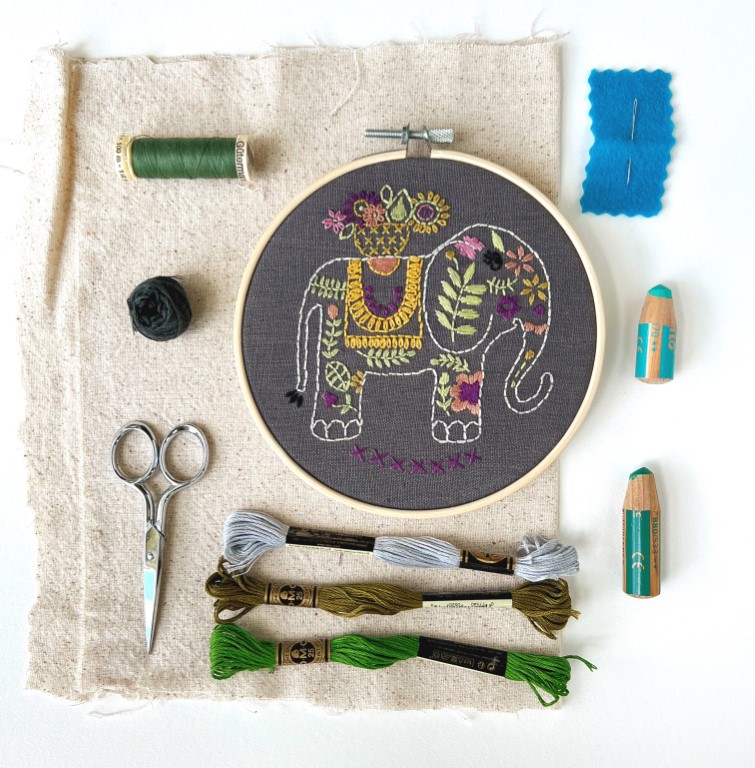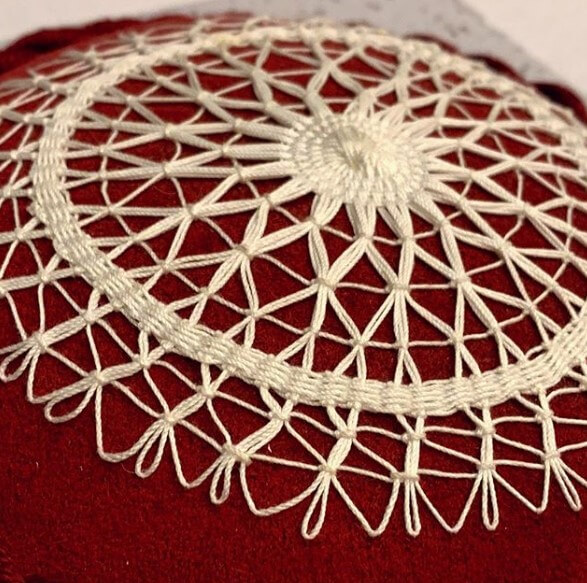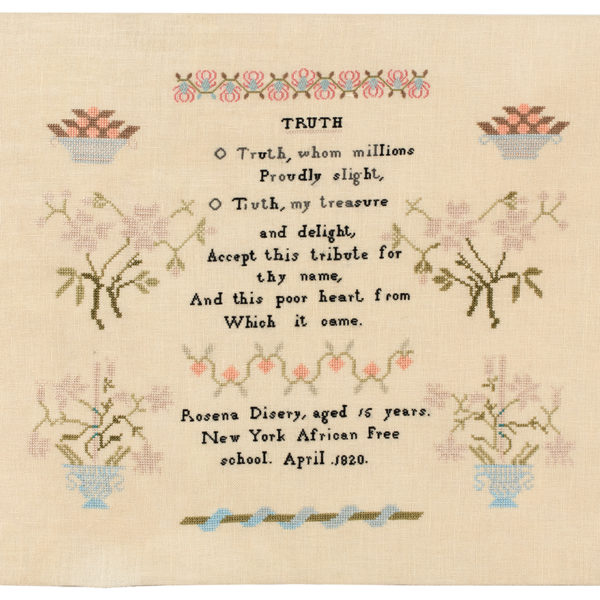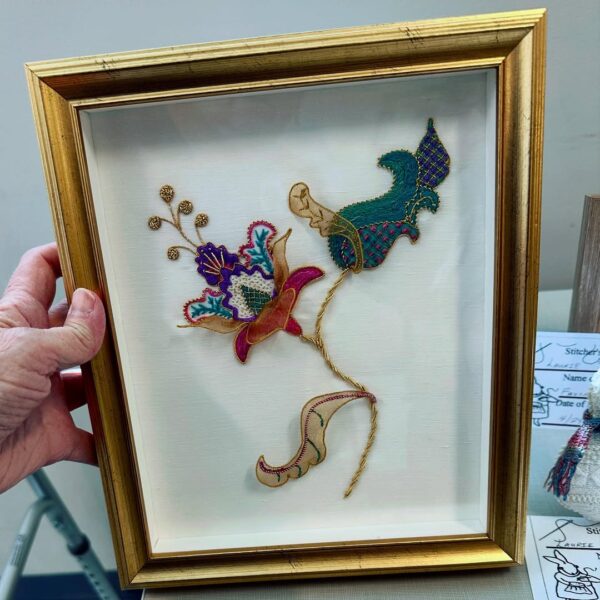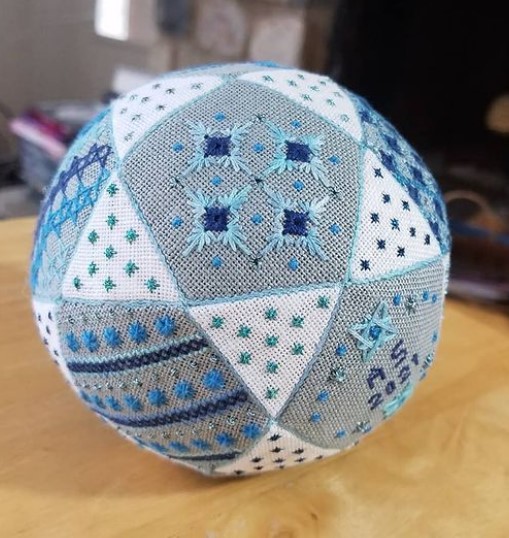EGA introduced the Technical Excellence program (TE) in the summer of 2023 to provide needleworkers with an opportunity to demonstrate technical excellence in specific embroidery techniques. The program debuted with Counted Thread and has since added Crewel, and EGA continues to explore other needlework techniques for supplemental Technical Excellence programs. We talked with Val Reece, who currently manages the Counted Thread program, to learn more about the Technical Excellence program.
Let’s start at the beginning. What were your first experiences with needlework?
I have a printed cross stitch project that I completed when I was a Girl Scout Brownie. It is the Brownie Promise. I was probably 6 or 7 years old at the time. I’m certain my mother helped me learn how to thread a needle. I also have a needlepoint (all tent stitch) of a cat that is probably from the same time period. I did little needle work for the next 15 years. Fast forward to my children’s pre-school teacher. Sharon taught me how to use waste canvas to put designs on my kids’ clothing. This brought a renewed interest in embroidery and introduced me to counted cross stitch. I could now move forward without ever doing another printed cross stitch project.
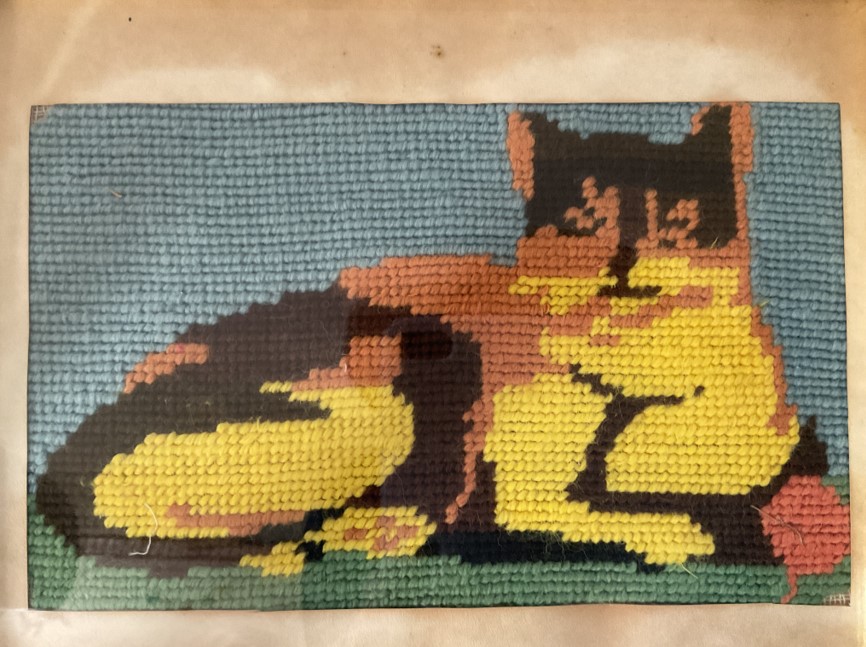
How did you first become involved with EGA?
I began my fifth career as an adult when I joined TRW (an aerospace firm where my husband worked). By this time, my daughters were in their Junior High years. My job was part time, so I could be home when my daughters were home. I eventually joined a club at work (Needles ‘N Knots) that met during lunch. Carol, one of the members of that club, recruited me to join her and the owner of the local needlework shop, Rose Cottage, as well as members of the local daytime chapter, Azure Verde, to create an EGA chapter that met in the evening. I joined the group and am one of the founding mothers of that chapter chartered in February 1992.
Tell us about EGA’s Technical Excellence offering.
Technical Excellence is an opportunity for the advanced stitcher to have their work evaluated against a high standard of excellence. Technical Excellence is a unique offering from the Education Department. It is geared toward the stitcher demonstrating proficiency with specific embroidery techniques.
How does the Technical Excellence program differ from other Education Department programs?
The Technical Excellence program was started by my predecessor, Celeste Chalasani. It came into being because EGA members expressed a desire for an evaluation that did not include being judged on their color, stitch, or design choices. The members wanted to be judged only on their actual stitching.
EGA currently offers two Technical Excellence programs: Counted Thread and Crewel. Programs in other techniques are being considered for development, although none have launched just yet.
Candidates enter the Technical Excellence program after they have taken courses in the areas that we will be judging. It is important that they have also had feedback from experts in each area.
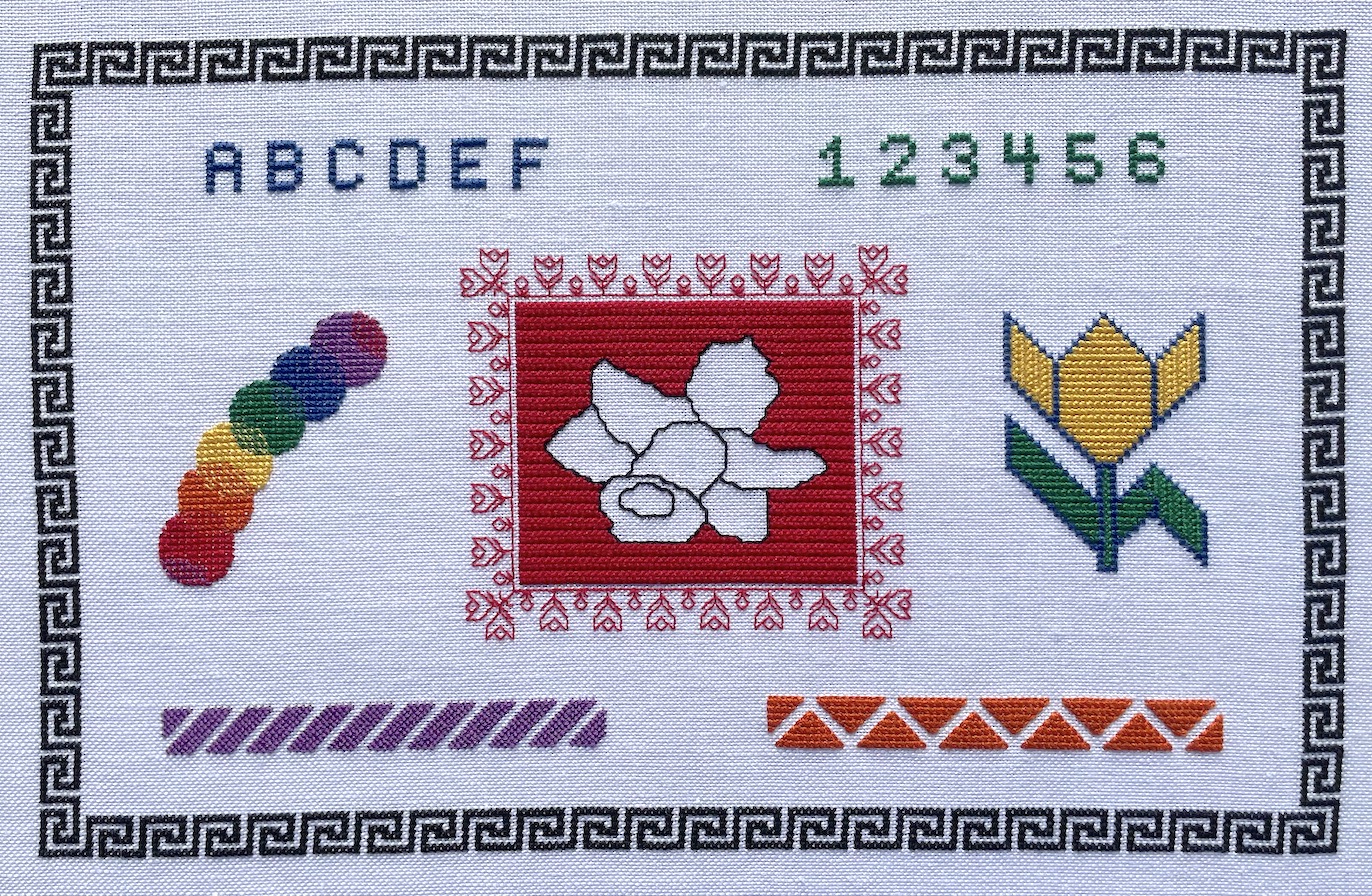
What should needleworkers expect to get from participating in Technical Excellence?
The advanced needleworker has the opportunity to concentrate on how carefully they can execute a provided design. This requires a high level of execution both on the front and the back of their work. They will need to follow the requirements that are itemized on the Judging Sheet, which they will receive along with the instructions. The instructions have been carefully reviewed for clarity and completeness. The candidate for Technical Excellence will need to make technical decisions about how to complete each step. There are four steps in each program.
Let’s focus on Technical Excellence in Counted Thread. The steps in Counted Thread are Cross Stitch, Blackwork, Pulled Thread, and Hardanger. You must pass step one before you can receive the instructions for and submit step two, etc. You have two years to submit step one, then five years for each subsequent step. If you do not pass a step, you must re-stitch and re-submit your piece.
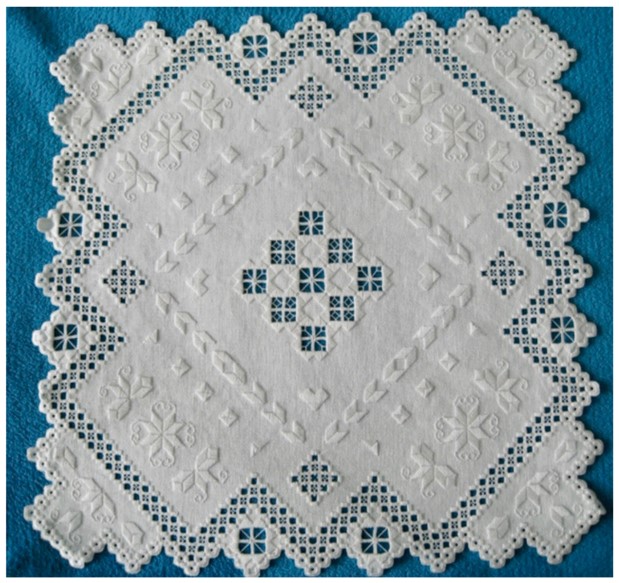
It sounds like needleworkers should have a high level of expertise in Counted Thread before becoming a candidate for Technical Excellence in Counted Thread. What are some steps a beginner embroiderer should take before signing up as a candidate for Technical Excellence in Counted Thread?
Signing up as a candidate for any Technical Excellence evaluation is a decision that a stitcher has considered for many years. Successful candidates for Technical Excellence in Counted Thread have already taken courses in the areas that we will be judging. It is important that they have feedback from experts in each area. This means that in-person classes, such as those that we offer at National and Region Seminars are good preparation. Also, our Group Correspondence Courses (GCCs) are good preparation, but only if the candidate submits their stitched GCC pieces to the teacher for evaluation and critique at the end of the course. This also gives the candidate experience with having their work subjected to evaluation.
The successful candidate is likely to have participated in similar activities many times during their stitching life. For example, I have taken at least six classes in Hardanger from more than three different teachers. They have each commented on different things that I could do to improve my Hardanger. For example, they have taught me how to successfully cut and remove threads, how to fix an error in cutting, and how to minimize the number of cutting errors, with the goal to having none in my completed piece. Some of my Hardanger classes were at my chapter, one was in a local needlework store, some were at seminars, some were with other chapters, some were GCCs.
Stitching with any group on the same project can also be beneficial. The group will often share their stitching experiences. This informal learning environment is a great place to ask “How did you do this?”
Each step in Counted Thread has a different piece of needlework. Each one is submitted separately for evaluation. How are pieces evaluated? What are the judges looking for when evaluating a piece?
The judging dates for Counted Thread are February 1 and August 1. Pieces must be submitted as directed in the information sent to each candidate. The candidate receives the judging sheets along with the instructions for the step they are working on. These are the same judging sheets the judges use when they evaluate a submitted piece. There are some general standards about neatness and cleanliness. There are specific standards for specific areas of each piece. The judges look at both the front and the back of the piece. They may provide comments on areas that need improvement.
After evaluating the piece, the judges make one of three overall decisions:
- Pass: The piece is excellent and has passed each of the items on the Judging Sheet
- Provisional Pass: There are just a few areas that need minor re-work. Fix these and resubmit.
- No Pass: This piece needs to be restitched.
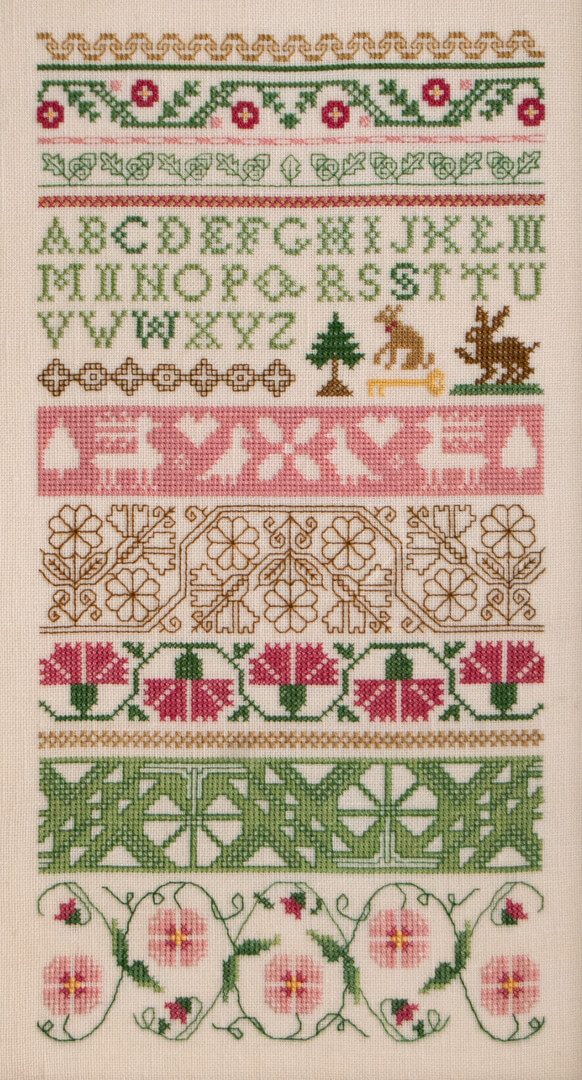
What advice do you have for embroiderers interested in deepening their embroidery skills?
In addition to pursuing educational classes offered by EGA and elsewhere, there are two GCCs that I recommend for candidates who need additional experience and evaluation in Cross Stitch. I recommend these two that Carolyn Standing Webb offers: “Ancestree” and “Perfectly Counted Crosses.” Of course, GCCs change over time, and we may not always have a course to recommend. These courses also take months to stitch, so the candidate ideally would have completed all their course work before they start the program.
